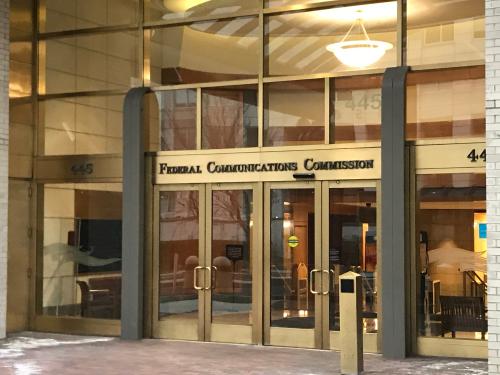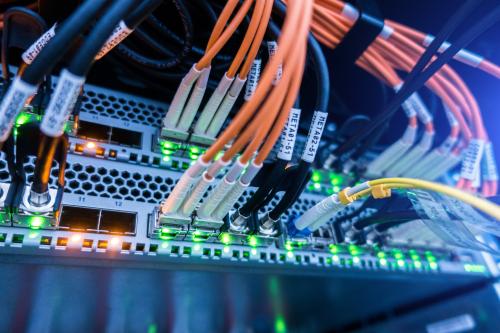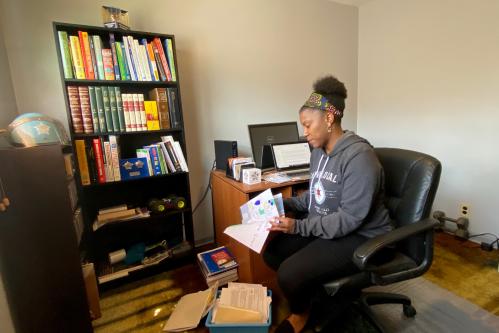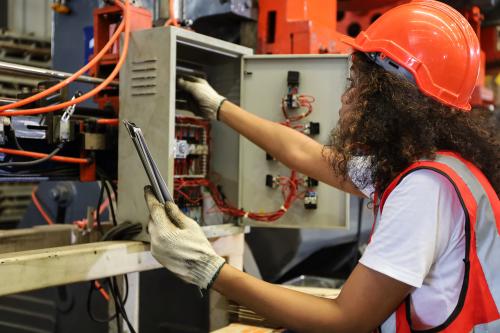In 1934, Congress mandated the newly created Federal Communications Commission (FCC) “to make available, so far as possible, to all the people of the United States a rapid, efficient, Nation-wide, and world-wide wire and radio communication service”—but left it largely up to the FCC and the states to figure out how to do so. In 1996, Congress expanded that universal service goal to include access to “advanced services,” meaning high-speed internet, and explicitly established a goal of “affordable” services, including to “low-income consumers.” There, too, Congress declined to provide appropriations to achieve those goals.
Now in 2021, Congress has done a lot more than just set goals for access to these services—it finally provided the funding to do so.
In the already passed Consolidated Appropriations Act of 2021 and American Rescue Plan Act (ARP), Congress appropriated tens of billions of dollars to achieve the goals of universal broadband access and affordability, meaning all can afford at least a baseline service. Further, the Senate just passed the Infrastructure Investment and Jobs Act (IIJA) which, if passed by the House, would provide another $65 billion in funding.
But to understand what the Senate both did and did not do in the new infrastructure package, we cannot simply focus on spending levels. It is essential to understand how the IIJA’s four primary pieces of broadband policy fit together to move the country toward its long-held goals of universal access and adoption.
First, the Senate funded the capital expenditures likely to be sufficient to deploy a future-proof network to nearly every business and home in the United States. The largest part of the IIJA’s $65 billion is a $42.5 billion appropriation to the states to fund broadband network deployments, prioritizing areas currently lacking a network capable of offering a 25 Megabits per second (Mbps) download and 3 Mbps upload service. This is on top of the ARP’s $10 billion program for broadband capital projects; that bill also made broadband projects eligible for expenditures as part of the $350 billion appropriation to state and local governments.
Will that be enough to get future-proof broadband networks everywhere? Probably. In 2017, the FCC estimated that it would cost $80 billion to deploy fiber—a future-proof technology—to every area of the country, with it costing $40 billion to deploy networks to up the percentage connected from 85% to 98%, and an additional $40 billion to deploy to the last 2%. Since then, the FCC has spent billions on rural deployment, though not all was spent on future-proof networks. Given the problems with mapping and the lack of an FCC update, we don’t know precisely what the necessary amount will be.
Still, given the scale of funding, the appropriations should be sufficient to address the shortfall in capital expenditures between what market forces would invest in unserved areas and the amount required to build networks in those places. It will not, however, be sufficient to cover the operating expense deficits for the final 2% of locations, which—as the 2017 FCC study noted—will still have operating losses even with capital expenses paid for with public funds. Thus, while the annual amount the FCC has traditionally spent on supporting capital and operating expenses in rural areas will be lowered, the universal service program will still need to provide some long-term funding in rural areas.
Second, the Senate provided a subsidy for low-income Americans to connect to broadband, sufficient to both build an appropriate system and to give the FCC time to restructure the current inadequate and fragile universal service program. There is significant evidence that the primary reason for most of the lack of connectivity in homes is that low-income Americans have problems affording an in-home service. The current FCC Lifeline program, which only offers a $10 subsidy, suffers from many problems and is not sufficient to address the issue.
The IIJA took this head-on, appropriating $14.25 billion to fund a $30 per month subsidy for low-income Americans to purchase broadband. Further, the legislation indicated that instead of looking at this program as only temporary in response to COVID-19, it should become a permanent support mechanism. Of course, even that appropriation is not a long-term solution. But Congress understood that gap and added a third critical piece to address that need:
Third, the Senate ordered the FCC to come up with a plan to reform universal service. Congressional funding would accelerate the country’s progress toward addressing both access and adoption challenges, thereby changing many of the assumptions about what the FCC needs to fund and the funding levels the FCC currently operates its universal service program with.
The new congressional funding, however, is not a permanent solution for the operating shortfalls in some rural communities, as well as the need for continuing FCC support to low-income Americans and anchor institutions such as schools, libraries, and health care facilities. In light of both changes and long-term needs, the IIJA wisely instructs the FCC to report back in nine months on how to improve “its effectiveness in achieving the universal service goals for broadband in light of this Act.”
Fourth, the Senate provided a surge of funding to address digital training and literacy. It has been widely recognized that, as one comprehensive report stated, “digital literacy is key to meaningful broadband adoption.” Sadly, there are still millions who have not adopted broadband due to a lack of understanding for how to use it effectively.
Over the last two decades, there have been numerous local efforts, but we have never as a country committed the resources necessary to address the issue assuring universal digital literacy for an economy and society that increasingly operates online. Again, the IIJA addresses this issue, appropriating $2.75 billion for digital inclusion efforts to insure that “individuals and communities have the information technology capacity that is needed for full participation in the society and economy of the United States.”
One can quibble with the details in these four policy areas. For example, the Senate decided to allocate funds for the deployment programs to states to distribute through “competitive grants.” But according to the FCC’s National Broadband Plan and recent research, reverse auctions are the most efficient way to allocate such funds. The Senate obviously disagreed, but that tactical difference is less important than the scale of the funding commitment and the holistic approach to the problem.
On that point, for example, nearly all the funds could have gone to solving the access problem, with little left over to address affordability. Indeed, early drafts of Democrat senators’ approach would have spent more than 13 times the amount on deployment than on adoption. Fortunately, the final total was more balanced, with deployment only being about three times greater.
This does not mean the challenges are now behind us. Implementation will be fraught with complications, and the required reform of universal service will raise many thorny issues. Further, we as a country have not yet begun to fully address the utilization challenge (which constituted about half of the 2010 National Broadband Plan) of figuring out how to use digital platforms to improve how we deliver essential services such as education, health care, job training and placement, and public safety, among others.
But for the purposes of this moment, the Senate did its job, appropriately addressing the core challenges of access, affordability, training, and planning. We should hope the House follows up soon.






Commentary
The Senate infrastructure bill’s four interconnected broadband components
August 13, 2021